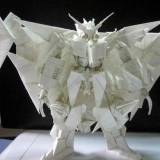Indie Studios & Content-Generating Algorithims
By fripplebubby 5 Comments
Games today rely on a lot more than the quality of the design ideas alone. There are many smart, enthusiastic and savvy indie game developers out there that have ideas worth making into games, but in many cases the games that end up being made have a hard time competing with those from big studios that are built on more established game design structures. The thing setting the two archetypes of games apart, besides sales numbers, is simply the manhours and high-priced design tools that large studios can afford while smaller ones cannot.
Most of the time, it seems that indie developers simply have to cut down on development time/cost in the simplest way they can: making less content. Fewer assets, fewer gameplay mechanics, less animation, and a generally shorter game are a result of developers with small teams making the tough choices that give their game better odds of actually getting to release intact.
A couple of the indie games that have made it big over the past few years have bucked this trend somewhat, and with teams that were (when the games first started getting popular) as small as technically possible (i.e. solo developers), but somehow ending up with more content in the game than any one person could ever rationally consume. Could this signal a new front in indie game development (or even in triple-A development)? I can’t say.
If you haven’t guessed by this point, the games I’m referring to are mainly Minecraft and Dwarf Fortress, though I’m sure many other indie games that fit this mold are in development currently.
Is it easier for an indie developer to design a game around randomly-generated content rather than building it entirely by hand? Probably not. To begin with, it’s not like Minecraft (for example) doesn’t require a lot of handcrafting. For now, “random” content-generation in games is decidedly limited. Textures aren’t randomly generated, 3D models aren’t randomly generated, AI isn’t randomly generated (though some AI systems in games are majorly impressive in that they can adapt and act organically, they are still very handbuilt), gameplay mechanics aren’t randomly generated, and so on.
Not to mention, the actual work of making code that can build a game world dynamically/randomly is difficult and non-intuitive. It’s time consuming to give a level designer whatever software program they use and say, “make me a world”, but at least you can be assured that they know how to do it and given enough time and money can make a big, interesting game world. World generation, on the other hand, is still mainly uncharted territory, and games like Minecraft use algorithms (which are better than any I’ve ever made) that aren’t remotely as capable as human level designers.
Perhaps the irony in hoping that random asset generation could be the saviour of small-team development (I’m not trying to insinuate that the indie development scene needs a saviour, either) is that the work required to make a game that is truly built from algorithms alone would in fact require a large team of programmers.
Really though, all this is just what I’ve gathered and come to conclusions about. Am I missing something? Do any indie developers (or just enthusiasts like me) want to weigh in on the whether random world/asset generation can ever or will ever replace human design?
